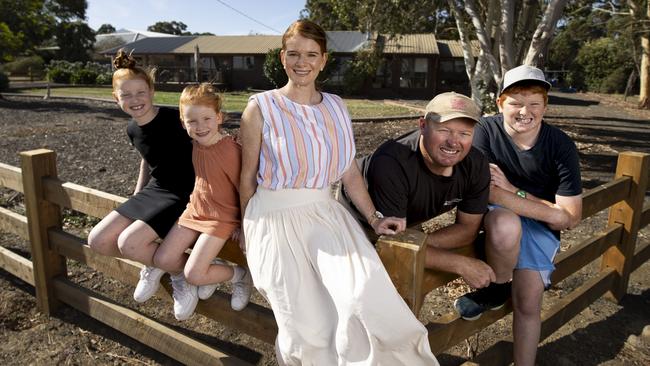New push to fire up the nation’s engine room
Many of Australia’s peak advocacy organisations are backing a new push to improve life and work in regional Australia.

Regional Australia might be the nation’s economic engine room but it is sputtering and needs fresh policy attention and business focus to deliver on its potential for the 9.5 million people living there and those looking to make the shift.
Greater emphasis must be placed on measures such as increasing school and post-school qualifications, boosting the proportion of skilled workers, supporting more childcare options and encouraging more health professionals and migrants to settle outside the capital cities.
This is the message from a cross-discipline group of peak organisations that form the new National Alliance for Regionalisation, launching in Canberra on Tuesday.
The 32-member alliance, which includes the Business Council of Australia, Australian Medical Association, Australian Industry Group and Master Builders Australia, will sign on to a range of 10-year goals to reshape the nation from one of the world’s most city-centric to one that more equitably supports liveability and productivity across the country.
The plan, developed by the Regional Australia Institute, is looking to create a fairer, younger, more prosperous and more balanced regional Australia for the 11 million people anticipated to be living there by 2032. If achieved, RAI modelling calculates a $14bn boost to national GDP.
“It’s no secret regional kids are still behind their metro counterparts at school,” RAI chief executive Liz Ritchie said. “Employers are struggling to get staff, yet migration levels are significantly lower in regions. Towns are crying out for doctors, but kids in the country are less likely to finish high school.
“Despite these challenges, regional Australia remains the engine room of our national economy, but it’s not firing on all cylinders,” Ms Ritchie said.
“You can’t solve the jobs crisis without addressing housing, the skills deficit without improving education standards and healthcare in regions can’t be improved without focusing on digital connectivity. All these issues are interlinked, complex and equally important.”
Adele Nairn, who lives with husband Shawn and their three children Matthew, 12, Emmi, 9, and Georgi, 6, just outside the Victorian city of Ballarat, said there were frustrations living regionally, but she wouldn’t swap it for the world.
“There’s this really big sense of community and connection,” Ms Nairn said. “People in regional areas are doers, they want to give back to their community, and this creates a real vibrancy.”
But she said there was still an attitude in regional areas that you have to leave your hometown to really make it. “We need to change that old rhetoric from ‘if you stay or return you’ve failed’ to being able to stay and thrive, using the skills you’ve built to contribute.”
Educational opportunity is top of mind for the Nairns as Matthew heads to high school next year. “There’s no lack of wonderful schools, yet the high school completion rate in the regions is only 65 per cent. So by sheer location Matthew is only a two- in-three chance of finishing high school, and that has a knock-on effect,” Ms Nairn said.
Ms Ritchie said regional Australia contributed 40 per cent of the nation’s economic output, yet the population continued to congregate in the big capitals, with Sydney and Melbourne heading beyond 10 million people each by the mid-2050s. Regional industries also generate two-thirds of Australia’s export earnings.
“Urban primacy has Australia out of step with global population trends and on a path that will see our major cities just get bigger at the expense of liveability standards and productivity,” she said.
AMA president Steve Robson said the standard of healthcare was one measure on which families based their decision on whether to stay in, or move to, the regions.
“There is increasing complexity of healthcare needs, which is the same for the regions, especially in mental health,” Dr Robson said. “And shortages in maternity care in some parts of regional Australia is catastrophic. We have to move away from doctors operating on a fly-in, fly-out basis in parts of Australia, or being bonded to areas for a period of time, and instead work to make the regions a natural, desirable home for young healthcare workers.”
The 10-year goals call for an increase in the share of skilled workers employed in regional areas to be boosted from 73 per cent currently to 80 per cent, and for school completion to rise from 65 per cent to at least 75 per cent. The proportion of migrants settling in regional Australia should be doubled from the rate of less than 20 per cent. And medical practitioners should increase from about 328 per 100,000 population to more than 428 over the next decade.








To join the conversation, please log in. Don't have an account? Register
Join the conversation, you are commenting as Logout